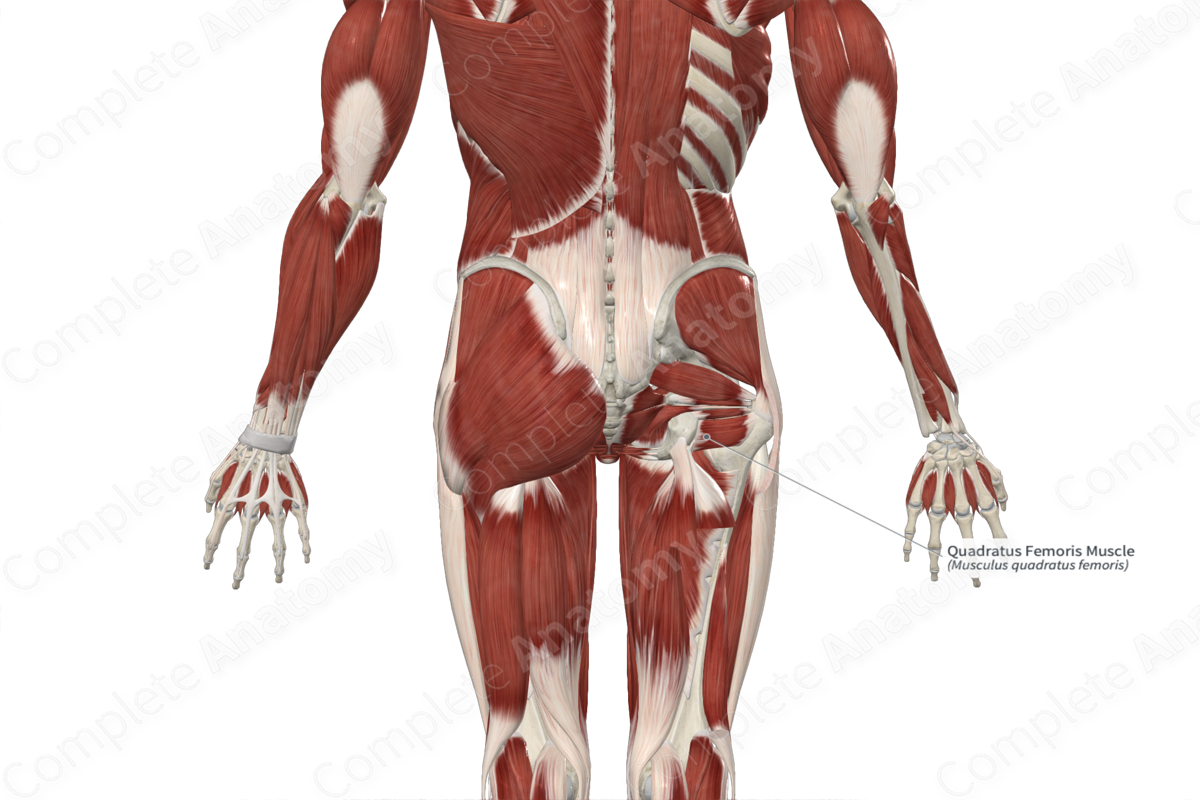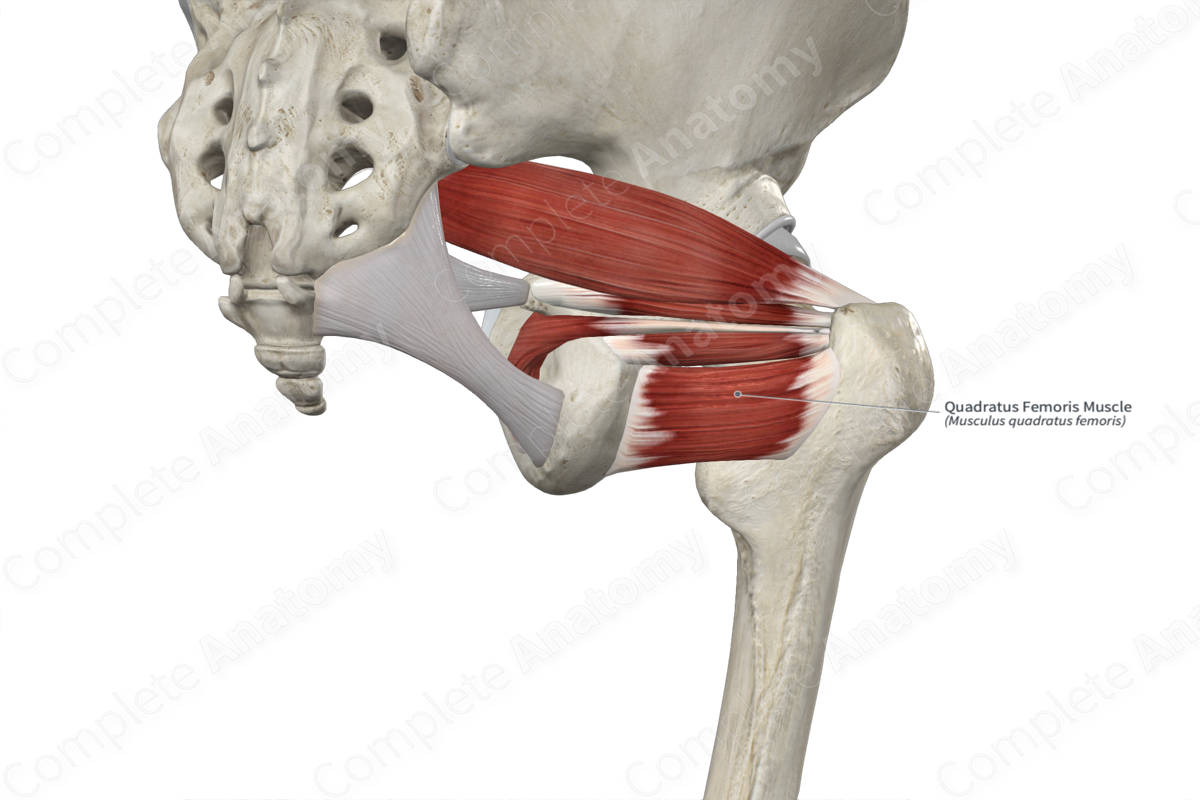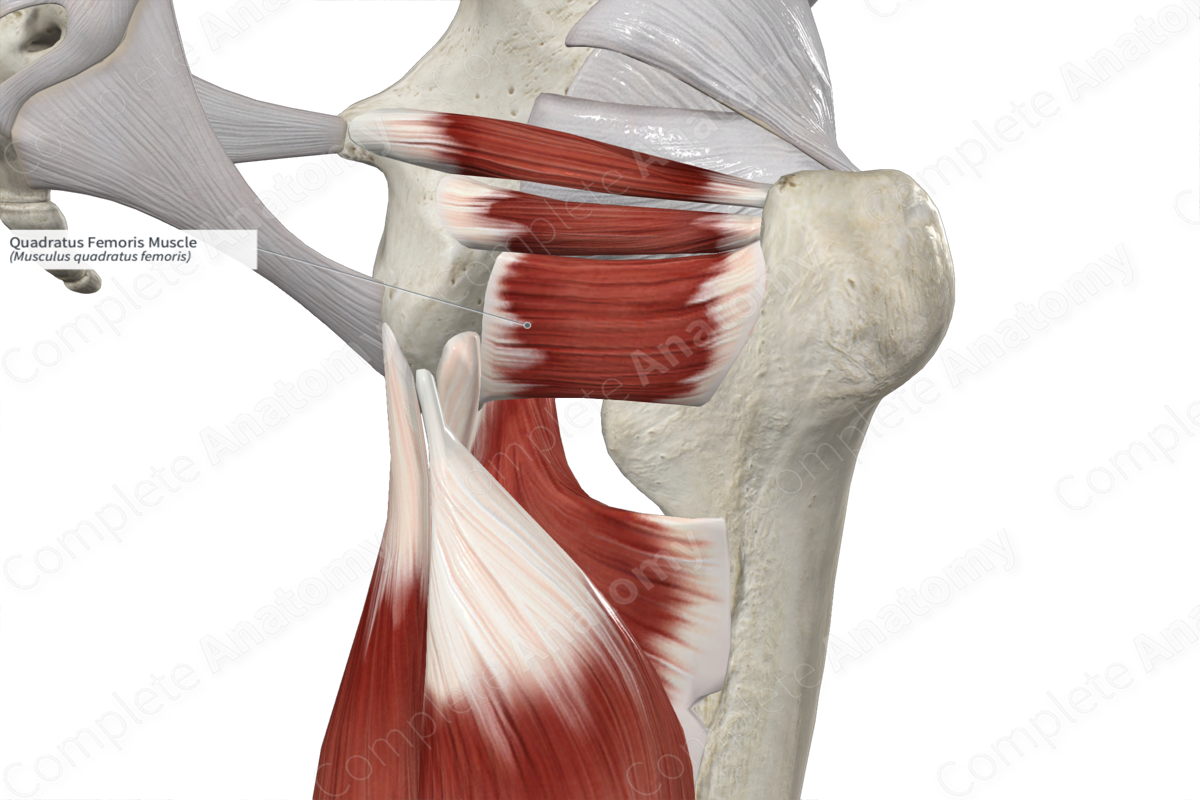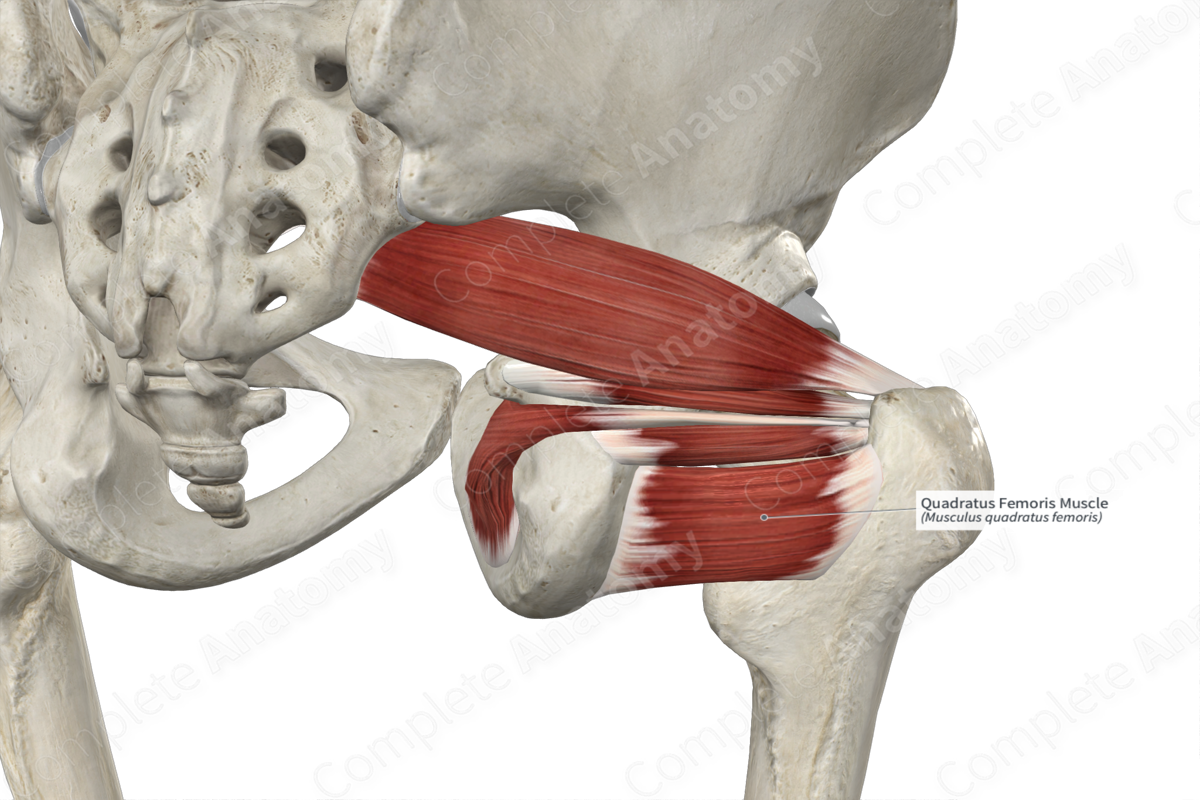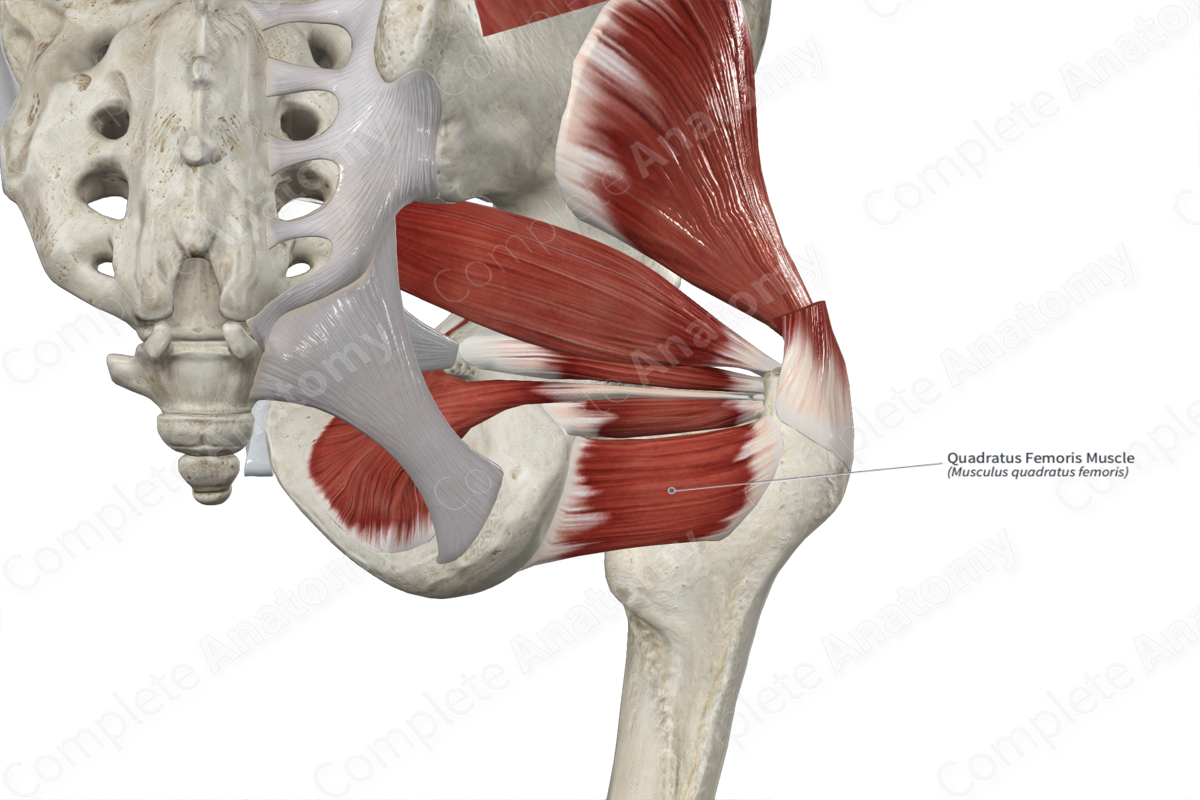
Quick Facts
Origin: Lateral margin of ischial tuberosity.
Insertion: Quadrate tubercle of femur.
Action: Laterally rotates thigh at hip joint.
Innervation: Nerve to quadratus femoris (L5-S1).
Arterial Supply: Medial circumflex femoral and inferior gluteal arteries.
Related parts of the anatomy
Origin
The quadratus femoris muscle originates from the superior end of the lateral margin of the ischial tuberosity.
Insertion
The fibers of the quadratus femoris muscle travel laterally and insert, via a broad tendon, onto the quadrate tubercle of the femur.
Key Features & Anatomical Relations
The quadratus femoris muscle is one of the deep gluteal muscles. It is a short, flat, quadrilateral type of skeletal muscle.
It is located:
- anterior to the sciatic nerve;
- posterior to the obturator externus muscle;
- inferior to the inferior gemellus muscle.
Actions & Testing
The quadratus femoris muscle laterally rotates the thigh at the hip joint. It cannot be tested in isolation; therefore it is tested simultaneously with the obturator externus and piriformis muscles and the three muscles of the triceps coxae (i.e., superior and inferior gemelli and obturator internus muscles) by laterally rotating the thigh at the hip joint against resistance (Standring, 2016).
References
Standring, S. (2016) Gray's Anatomy: The Anatomical Basis of Clinical Practice. Gray's Anatomy Series 41st edn.: Elsevier Limited.
Learn more about this topic from other Elsevier products
Quadratus Femoris Muscle

Ischiofemoral impingement refers to the compression of the quadratus femoris muscle between the ischium and the lesser trochanter in hip extension with external rotation and adduction.

